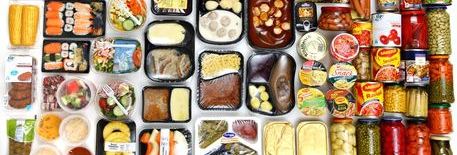Top 10 web trends shaping the future of sustainable business
Article by Wayne Visser
Written for The Guardian.
Web 2.0 is not just about sharing photos on Facebook. It is a new mindset focused on collective intelligence and co-creation.
Web 2.0, or the ability to share and manipulate information online through user collaboration, has had a disruptive effect on business. Customers now expect to participate in the corporate world, and place a greater value on transparency in return.
This new environment, termed “wikinomics” by Don Tapscott and Anthony Williams, is based on four principles: openness, peering, sharing and acting globally. Here are the top 10 ways that web 2.0 technologies and digital cultures will impact on business, driving them towards more sustainable behaviour during the next decade.
1. Net value footprinting
Business has evolved over the past two decades from being highly opaque to gradually embracing more transparent practices. This has been a result of regulation, such as the Toxic Release Inventory in the US, which requires thousands of American companies to report their use of more than 650 toxic chemicals, and voluntary efforts including the Global Reporting Initiative’s sustainability guidelines.
But in a web 2.0 world, companies are expected to measure and disclose their impact across the entire lifecycle of their products. This process of quantifying business’s economic, social and environmental costs to society is sometimes called full-cost accounting. I call it “net value footprinting”. Good examples of this approach include Puma’s environmental profit and loss statement and the research carried out by Global Footprint Network.
2. Forensic impact analysis
While progressive companies are steadily improving their transparency, there will also be millions of irresponsible companies trying to fly under the radar of regulation and public scrutiny, running polluting operations that expolot cheap labour and abuse human rights.
These rogue businesses can now be caught and exposed through the emerging practice of forensic impact analysis. This will happen through a combination of traceability technology (which finds the electronic footprints left by all businesses in the supply chain), forensic substance analysis (which can identify the source of fibres, chemicals and other product components) and vigilant activists and consumers who capture malpractices using photographs, videos and audio recordings leaked via social media.
This approach has been pioneered in the food industry, where reputable businesses use barcodes to monitor and qualify every stage of their production process. Tracking techniques were also used to expose Trafigura’s dumping of toxic waste along the Ivory Coast.
3. Crowdsourcing
Companies from the pre-digital age still believe that focus groups, public meetings, stakeholder panels and the occasional online or instore survey are adequate for taking the pulse of their customers and investors. At the same time, they are often distrustful of ideas suggested outside their organisations.
By contrast, web 2.0 savvy companies realise that the world has moved into an era of crowdsourcing. Future businesses will use filtered, or expert, crowds to monitor their reputation, get feedback on sustainable innovations and ask for help in solving difficult dilemmas. For example, Sony’s Open Planet Ideas and FutureScapes campaigns aimed to generate new sustainable technology ideas.
4. Disruptive partnerships
Companies have had a decade to get used to the idea of cross-sector partnerships, which have been heavily promoted through the United Nations and given a boost through inclusion in the Millennium Development Goals. But now business is expected to get into more challenging partnerships that disrupt the status quo. One example is Rio Tinto working with the World Conservation Union to reduce the impact on biodiversity.
These relationships also play out online. Greenpeace used social media very effectively to campaign against Nestle’s Kit Kat brand, after finding an Indonesian supplier was clearing tropical rainforest to grow palm oil. A year later the campaign group praised Nestle for its no deforestation commitment through its challenging partnership with TFT, a sustainable forestry NGO.
5. Open sourcing
One of the biggest changes in the society over the past 10 years has been the explosion of social media. This revolution goes beyond sharing our holiday photos on Facebook or micro-blogging the minutiae of our lives on Twitter. The more fundamental innovation is a shift in thinking and practice towards open sourcing, which at its heart is about the idea of co-creation.
This has influenced good business practices. After a decade under siege – with big pharma being accused of overpricing patented brands and blocking access to cheaper, generic and often life-saving drugs – GlaxoSmithKline committed to put chemical processes that it has intellectual property rights over that are relevant to finding drugs for neglected diseases into a patent pool so they can be explored by other researchers. Similarly, Tesla’s CEO Elon Musk decided last year to open up all its patents “for the advancement of electric vehicle technology.”
6. Wiki-ratings
A common feature of web 2.0 design is that it allows users to express an opinion on content, from the ubiquitous “like” button on Facebook to the fresh-red versus rotten-green tomato movie rating system on rottentomatoes.com. When it comes to business, wiki-based platforms allow the public to rate and comment in detail on the economic, governance, social and environmental performance of companies. One such platform is Wikirate, where I serve on the advisory board, which allows for real-time updating. Any ethical infringement – or a positive sustainability innovation – will be reflected almost immediately in the company’s rating. Other pioneering examples in the ratings space are GoodGuide, WeGreen, and Project Label.
7. Prototyping
In a web 2.0 world prototypes are launched early, as imperfect versions used solicit rapid user feedback in a process known as”beta-testing”. One way to bring about such rapid, open-source prototyping is through competitions.
The X-Prize describes itself as “bringing about radical breakthroughs for the benefit of humanity” by offering multi-million dollar prizes in return for innovative ideas to tackle global problems. Another example is Virgin’s $25 million Earth Challenge to help design a “commercially viable design which results in the net removal of anthropogenic, atmospheric greenhouse gases so as to contribute materially to the stability of the earth’s climate system”.
8. Smart mobbing
Web 2.0 technologies have spawned a new type of protest activity called smart mobbing. This means using real-time media and sharing platforms, such as text messages and social media status updates, to rapidly organise a crowd.
Viral text messaging in the Philippines helped to oust former President Joseph Estrada in 2001 and the use of Twitter proved pivotal during the Arab spring uprisings in 2011. Smart mobs can also co-ordinate virtual activity, such as when the hacktivist group Anonymous encouraged its followers to launch cyber attacks against Visa, MasterCard, PayPal and other companies opposing Wikileaks in 2011.
Mission 4636, meanwhile, created a text-mapping emergency communications system after the 2010 Haiti earthquake. In future, companies and governments will need to anticipate and respond to activist smart mobs as well as seed their own.
9. App farming
The war of the computing giants has turned into the battle of the apps, spawning a new generation of software applications focused on social and environmental solutions. Google Play lists more than 400 sustainability-related apps. The most popular is BlaBlaCar, which connects drivers with empty seats with people looking for a ride, allowing users to search the biggest European car-sharing community.
Common tools in this genre include ethical shopping guides, carbon footprint calculators and educational games. Businesses of the future will be judged on whether they can seed and grow farms of apps that provide solutions to the world’s most serious challenges.
10. Plug and play
Today’s smart technology detects its operating environment, installs whatever software is needed and begins operating without any action by the user. Rather than having to manually unplug or switch off household electrical devices to save energy, plug-and-play technology for the home automatically detects all idle devices and disables them remotely. Similar approaches apply to optimal energy-efficient heating and cooling of buildings, and low-carbon driving, which automatically chooses acceleration and cruise speeds that reduce emissions.
In future automatic product filters will match our preferences for fairtrade, organic, beauty without cruelty, or other ethical products. When shopping online, we will only see those items that match our preferences. In store, we will be alerted to products that meet our standards by automatically scanning barcodes through mobile devices.
The message is clear for business. Web 2.0 is not just about everybody being continuously online. Rather, it is a new business mindset that uses collective intelligence and co-creation to find solutions to our global challenges, and uses technology to achieve speed and scale in spreading innovation to the parts of the world with the most urgent unmet needs.
Download
[button size=”small” color=”blue” new_window=”false” link=”http://www.waynevisser.com/wp-content/uploads/2015/05/article_web10trends_wvisser.pdf”]Pdf[/button] Top 10 web trends shaping the future of sustainable business (article)
Related websites
[button size=”small” color=”blue” new_window=”false” link=”http://www.waynevisser.com/books/the-quest-for-sustainable-business”]Link[/button] The Quest for Sustainable Business (book)
[button size=”small” color=”blue” new_window=”false” link=”http://www.kaleidoscopefutures.com”]Link[/button] Kaleidoscope Futures (website)
[button size=”small” color=”blue” new_window=”false” link=”http://www.csrinternational.org”]Link[/button] CSR International (website)
Cite this article
Visser, W. (2015) Top 10 web trends shaping the future of sustainable business. The Guardian, 22 January 2015.











